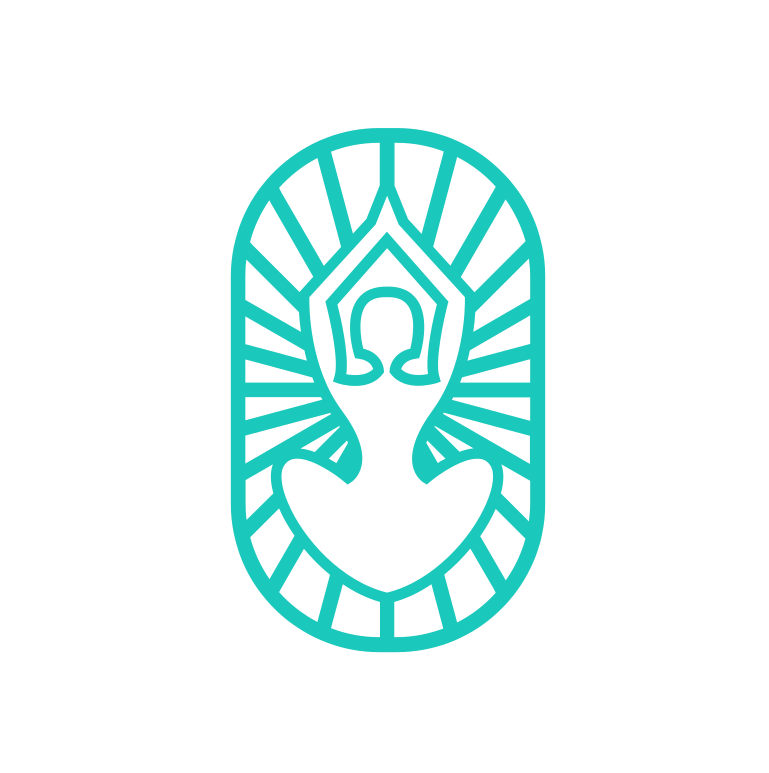If you’ve landed here, you have likely become aware that you have some form of nervous system dysregulation. This awareness is a crucial first step towards healing.
But what comes next? If you are wondering how to heal a dysregulated nervous system, I’m sorry to tell you that there is no one-size-fits all approach – but this article WILL give you some suggested starting points.
Something important to note before you dive in head first; with nervous system regulation – less is always WAY more, and going slow is key to making long-lasting changes.
If you’ve had your symptoms for years or even decades – this concept may seem really frustrating. If you’re anything like me, you’ll want to fix it all – and fix it all RIGHT NOW. But if you take away just one thing from this article – it’s that you should go slow.
This list should not become a to-do list and you certainly don’t have to try every item on the list, in fact, just 3, 2 or even 1 would be beneficial.
Browse the list and find what feels manageable and sustainable for you. Even the smallest practice daily will result in big rewards over time. Let’s get started.
Awareness
Building awareness helps you understand your body’s stress responses and triggers, setting the foundation for effective regulation.
1. Daily Check-ins: Reflect on your emotional and physical state each day to identify stress patterns and triggers.
2. Trigger Mapping: Create a visual map of stressors by noting specific events and your reactions to them.
3. Biofeedback Tools: Use apps or devices to monitor physiological responses, such as heart rate variability, to better understand stress patterns.
4. Mindful Observation: Spend a few minutes each day observing your thoughts and physical sensations without judgment to increase self-awareness.
Body-Based Practices
Engaging in body-based practices can provide immediate relief from stress and support long-term nervous system regulation.
5. Butterfly Taps: Tap your chest in a butterfly motion to activate calming reflexes.
6. Progressive Muscle Relaxation: Tense and then relax different muscle groups to reduce physical tension.
7. Self-Massage Techniques: Use gentle sweeping motions and light pressure on areas like your neck, arms and shoulders to alleviate stress.
8. Deep Pressure: Apply firm, even pressure to your limbs or use a weighted blanket to help ground and calm yourself.
Circadian Rhythm
Maintaining a balanced circadian rhythm supports overall well-being and helps stabilize your body’s natural stress responses.
9. Consistent Light Exposure: Get 20 minutes of natural light exposure each morning to regulate your internal clock.
10. Limit Evening Stimulation: Reduce exposure to bright lights and stimulating activities in the evening.
11. Temperature Regulation: Keep your bedroom cool and well-ventilated to support restful sleep.
12. Avoid Napping Late: Refrain from long naps in the late afternoon or evening to avoid disrupting your nighttime sleep.

Home Environment
Channel your inner Marie Kondo and creating a calming home environment. More organization and less clutter = reduced stress and more regulation.
13. Zen Space: Designate a clutter-free “zen space” in your home with calming elements like cushions and comfortable seating. Bonus points if you can make the whole house like this.
14. Aromatherapy: Use essential oils or scented candles with relaxing fragrances like lavender.
15. Greenery: Incorporate indoor plants to improve air quality and add a soothing, natural element to your space.
Work Environment
Asking for what you need at work can make a huge difference in reducing stress and supporting nervous system regulation.
16. Ergonomic Setup: Ensure your workspace is designed to prevent physical strain and discomfort.
17. Scheduled Breaks: Take short, frequent breaks to stretch, move, or practice deep breathing.
18. Task Prioritization: Organize tasks by priority, break larger projects into manageable steps, and learn to say no when you have too much on your plate.
19. Personalized Workspace: Add personal touches, like photos or plants, to create a more comfortable and enjoyable work environment.
Sleep
Good sleep hygiene is essential for nervous system regulation, affecting mood and overall health.
20. Sleep Environment Optimization: Use blackout curtains and keep your room cool to create an optimal sleep setting. Basically, make your room like a cave.
21. Evening Rituals: Create calming pre-sleep routines, such as reading, listening to chill music or gentle stretching.
22. Pass on Over-Indulging: Avoid eating large meals or drinking caffeine close to bedtime.
23. Noise Reduction: consider earplugs to create a more peaceful sleep environment.
Diet
Your diet HUGELY impacts your nervous system’s function, so maintaining a balanced diet is key to overall well-being.
24. Find Balance: Eat a balanced diet with a mix of proteins, healthy fats, and complex carbohydrates to stabilize blood sugar levels.
25. Hydration: Drink plenty of water throughout the day to stay hydrated. Better still, try this tropical electrolyte elixir for the ultimate hydration boost.
26. Gut Health Support: Incorporate prebiotics and probiotics to support a healthy gut microbiome.
27. Omega-3 Fatty Acids: Eat foods rich in omega-3s, like salmon and flaxseeds, to support brain health and reduce inflammation.
Attachment Styles
Did you know you have an ‘attachment style’? Your attachment style determines how you relate to those around you, and improving it can lead to healthier relationships and a more stable nervous system.
28. Attachment Style Assessment: Identify your attachment style through quizzes or therapy.
29. Therapeutic Work: Explore attachment issues with a therapist to develop healthier relational patterns.
30. Secure Relationship Building: Focus on building trust and open communication in your relationships.
Connection
Building supportive relationships and ‘finding your tribe’ can be super helpful for creating emotional stability and resilience. But it can also feel daunting if you struggle with social interactions. Start small and within your window of tolerance.
31. Support Groups: Join communities or support groups that align with your interests or experiences.
32. Volunteering: Participate in volunteer work to connect with others and create a sense of purpose.
33. Active Listening: Practice active listening in conversations to strengthen connections and show support.
Work on Polarity
You may not want to hear this but being a boss babe may be contributing to your nervous system dysregulation and burnout. And so does being a nice guy who doesn’t know how to get his needs met. Balancing roles and responsibilities within your relationships promotes a healthier nervous system.
34. Role Negotiation: Clearly define and negotiate roles and responsibilities with your other half to avoid resentment burnout.
35. Regular Feedback: Have open discussions about workload and stress levels to address issues early and prevent overwhelm.
36. Self-Care Integration: Incorporate regular self-care practices and alone time into your routine to maintain balance.
Sensory Practices
Sensory practices can provide instant calming experiences that can help regulate your nervous system.
37. Sensory Bottles: Create bottles filled with glitter and water to use as a calming visual distraction. Great for kids and adults alike.
38. Textured Objects: Keep stress balls or fabric swatches with different textures to hand for tactile soothing.
39. Heat Therapy: Apply a warm compress or heating pad to tense areas for soothing relief.

Vestibular and Proprioceptive Techniques
These techniques improve body awareness and balance, supporting nervous system regulation and reorganization. Practice with caution if your dysregulation symptoms include vertigo or dizziness.
40. Swaying Exercises: Gently sway from side to side to provide vestibular stimulation.
41. Head Tilts and Rolls: Perform gentle head tilts and rolls to engage the vestibular system.
42. Balance Board: Use a balance board to improve proprioceptive awareness and stability.
Devices
Certain devices and wearables offer non-invasive support for managing dysregulation by providing feedback or vagus nerve stimulation. These are ideal if you are just getting started and you don’t have energy for physical practices.
43. Apollo Neuro: Use this wearable for subtle ‘vibes’ that promote a balanced nervous system.
43. Nurosym: Try this device for vagus nerve stimulation and to support relaxation.
44. Heart Rate Variability Monitors: Track and improve stress responses using HRV monitors.
Programs
Structured and professionally guided programs provide comprehensive approaches to nervous system regulation, and create a foundation for healing chronic health conditions. These programs are perfect if doing it yourself feels overwhelming, you’re not getting the results you want alone, or you need support for deeper levels of dysregulation.
45. Dr. Linnea’s Heal Your Nervous System: We love this holistic program for it’s various therapeutic techniques and structured step-by-step approach.
46. DNRS (Dynamic Neural Retraining System): DNRS is where it’s at for brain retraining. We LOVE the education DNRS provides on rewiring neural pathways, combined with some really powerful exercises.
47. SSP (Safe and Sound Protocol): This gentle auditory intervention is perfect for adults and kids to enhance emotional and physiological regulation.

Halt Rumination
Unhelpful thought patterns – we all have them. Interrupting these pesky ruminations can help you manage stress and maintain a balanced mindset.
48. Thought Stopping: Use mental cues or physical actions to halt negative thought patterns.
49. Cognitive Restructuring: Challenge and reframe negative thoughts to adopt more balanced perspectives.
50. Mindfulness Meditation: Observe thoughts without judgment to reduce rumination.
Exercise
Physical exercise not only benefits your body but also supports nervous system regulation through movement and stress relief.
51. Clinical Somatics: Clinical somatic exercises help to release chronic muscle tension by gently retraining the nervous system.
52. Yoga: Incorporate gentle yoga routines focused on breath and movement for overall balance. We’re talking traditional yoga here, not hot yoga that makes your face burn.
53. Tai Chi: Practice Tai Chi’s slow, deliberate movements to promote relaxation.
54. Walking in Nature: Yes this counts as exercise – and it’s good for the soul.
Co-Regulation
Co-regulation involves engaging with others to stabilize and support each other’s nervous systems. It can be as simple as a snuggle on the couch, or as intimate as synchronized breathing exercises combined with eye gazing.
55. Shared Breathing Exercises: Practice synchronized breathing with a partner to promote calm.
56. Physical Affection: Use touch, like hugging or holding hands, to enhance connection and regulation.
57. Empathic Listening: Offer and receive empathic listening to strengthen emotional support.
Remember, nervous system regulation is a marathon – not a sprint. And while none of these tips will heal you over night, they provide a great starting point to creating your own personalised regulation plan.
Disclaimer: In order to keep creating content, we may earn a small commission for qualifying sales made via affiliate links in this article. As always, all views and opinions are based on our own personal experiences.

